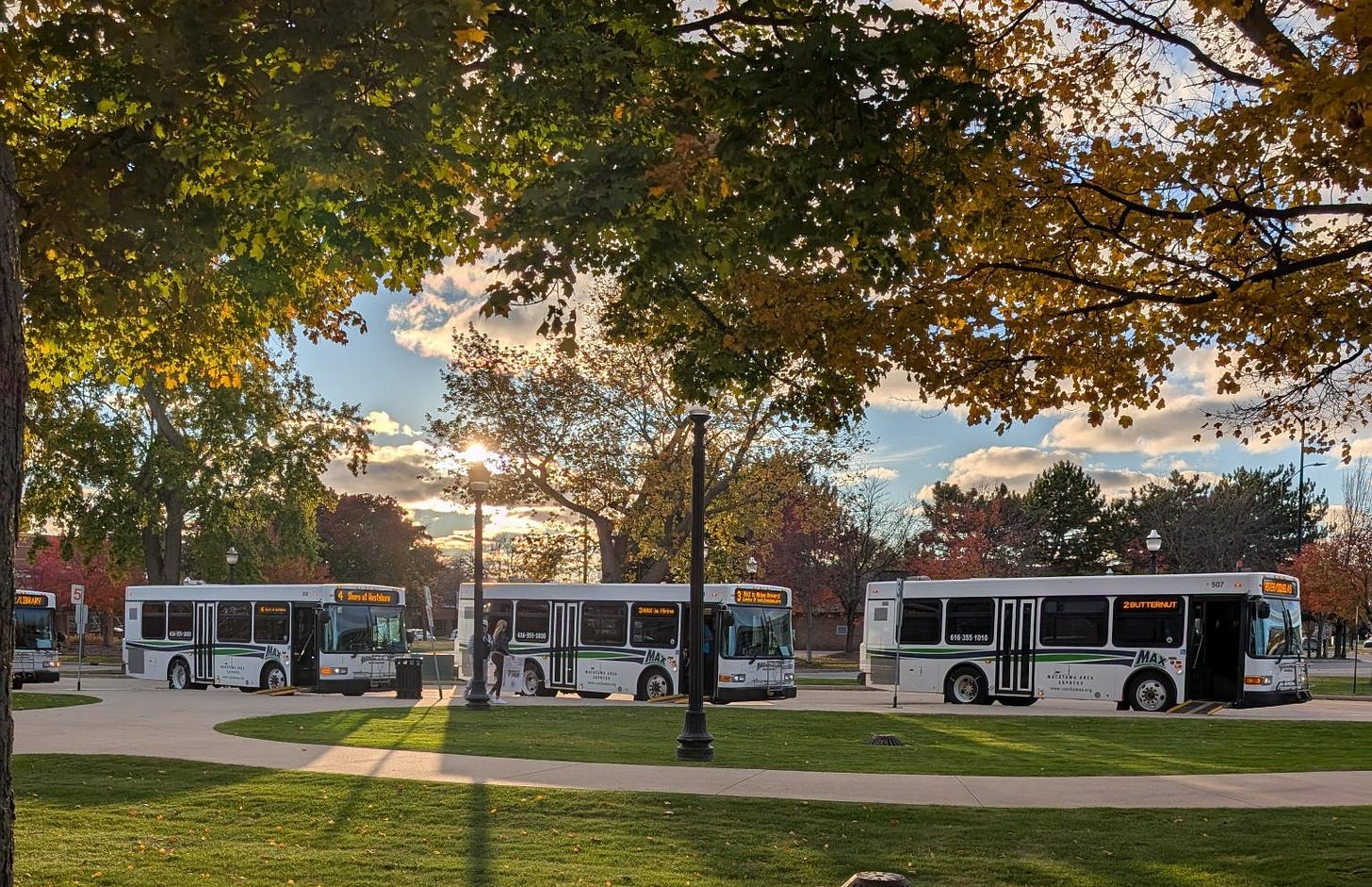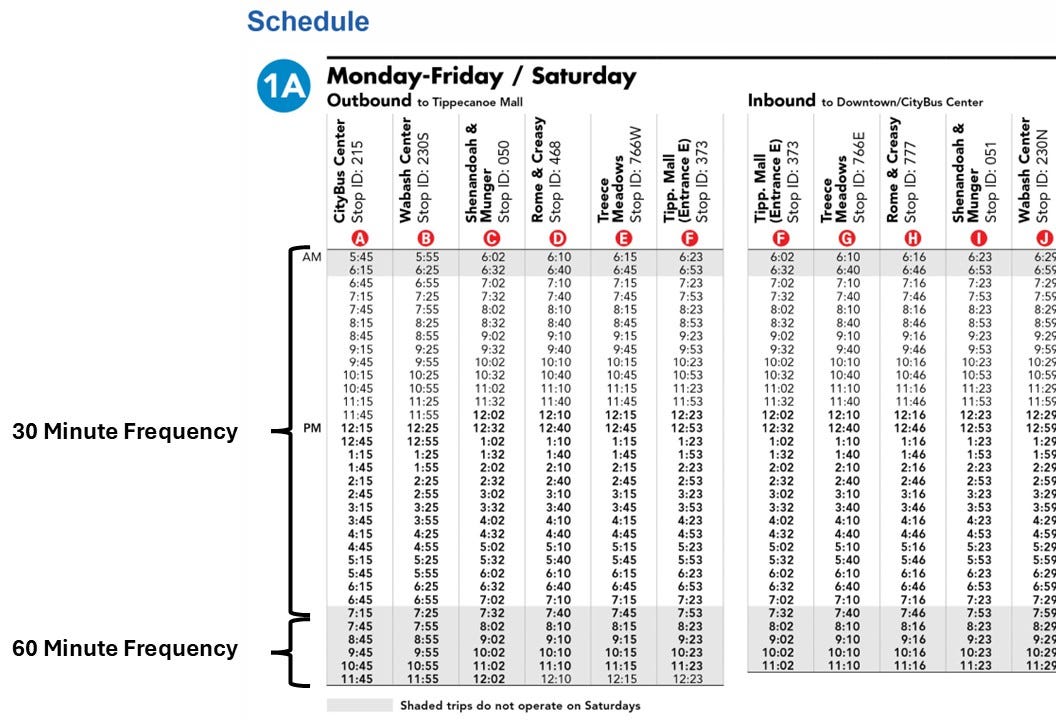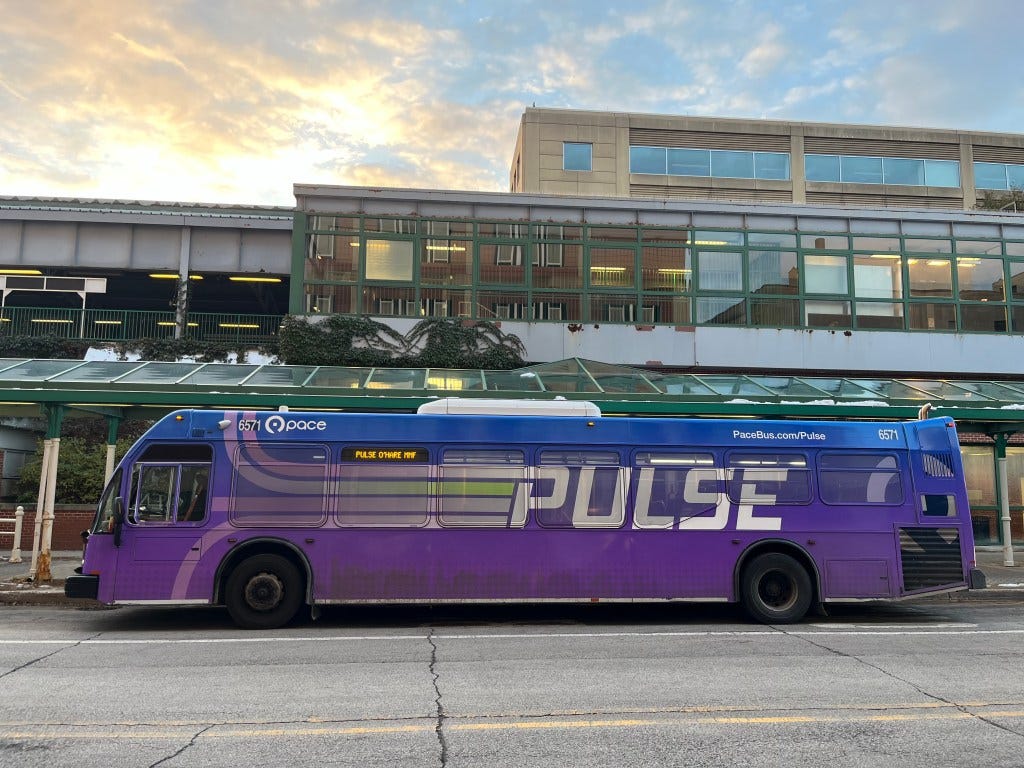More Buses, More Riders: The Case for Frequent Transit
People can't take the bus that never comes.
Whenever I meet a new person and mention that I’m a transit planner, the first question I often get is some variant of “can you come and fix my local transit system?” Nine time out of ten, the TL;DR1 answer to this question is frequency. If you only know one thing about public transit, know this:
Public transit’s usefulness increases EXPONENTIALLY📈 with frequency
There are a lot of reasons why our transit systems are not all that frequent (I’ll get into that in a future post), but for now, let’s talk about why frequency is so important to Good Transit.
Frequency (adj) - The elapsed time between consecutive buses (or trains, or ferries) on a transit line2
Frequency is how often the bus comes. The route shown below operates at a 30 minute frequency until 7:45 pm, when it drops to a 60 minute frequency.
If you’re already familiar with transit, this is probably old news to you. However, it’s so central to Good Transit that the point is worth belaboring.
Imagine. You arrive at work, coffee in hand, ready (enough) to start your day. You get to the elevator and press the up button and you wait…and you wait…and you wait. You work on the 14th floor, so the stairs are an option, but not a great one. After 20 minutes of waiting, the elevator shows up. Upset (and probably a little confused), you and your now cold coffee get on the elevator and head up to join your (already started) first meeting of the day. Not very useful, was it?
Think of transit like the elevator at your workplace. It’s only useful if it actually comes in a reasonable time. For elevators, a reasonable amount of time is about 20 seconds, per Otis Elevators. For transit, a reasonable amount of time is about 7-8 minutes.
Transit Planner’s Tool: Average Wait Time
In transit planning, average wait time is typically calculated by dividing the frequency by two. If a route runs every 60 minutes, we would say the average wait time is 30 minutes. This reflects how long someone would wait on average if they just arrived at the bus stop without checking the schedule.
An average wait time of 7-8 minutes translates to a bus every 15 minutes. Every 10 minutes is even better. Every 5 minutes amazing. However, every 15 minutes is the threshold where most industry research shows that transit passengers no longer rely on the schedule, and instead just show up at the bus or train stop. At a 15 minute frequency, the average passenger can expect to wait about 7-8 minutes for the next bus or train.
Pace, the transit authority serving suburban Chicagoland provides an illustrative example of the power of frequency. Pace operates a network of 150(ish) bus routes that carried over 16 million passengers in 2023. The Regional Transportation Authority Mapping and Statistics (RTAMS) website lets us look at Pace ridership by route. The Pace website lets us observe the frequency of each route. The table below shows Pace’s top 10 busiest routes by ridership in 20243, with their weekday frequency.
Despite only making up about 7% of the overall Pace network, these routes carried about 1/3 of total weekday ridership in 2024. Notably, these are also amongst the most frequent routes in the Pace network. Most notable (at least for the point I’m trying to make here) is the Pulse Dempster line.
This route, the second Arterial Rapid Transit (ART) line to launch under Pace’s Pulse program, started full service in October of 2023. In less than two years, it rose to be one of the busiest routes in the system. I’m sure the limited stops and free on-board Wi-Fi helped this ascent, but it can not be ignored that this route is also very frequent. It operates every 15 minutes, daily. Passengers don’t have to plan ahead to take the Pulse Dempster Line; they can arrive at the stop under the assumption that the bus will be here soon.
I’m not saying any of this to say that other factors (like supporting land use, perceptions of safety, and good service design) are not important to the success of transit. However, lapses in other factors can be papered over pretty easily with higher frequencies.4 If you have one demand of your local transit agency, or you are working in planning and are tasked with making decision about transit service, remember that frequency truly is key. After all, people can only take the bus that actually comes.
Thanks for reading! I’m doing research for an article about the urban planning space generally and could use your help. If you work in urban planning or an urban planning adjacent field, or you live in a city and care about how it functions, please take a minute and fill out this 5 minute survey and pass it around your networks. Thanks in advance!
» Survey Link «
Too long; didn’t read
December 2024 data was not available at the time of this publication
I’m not suggesting they should be, but they CAN be






